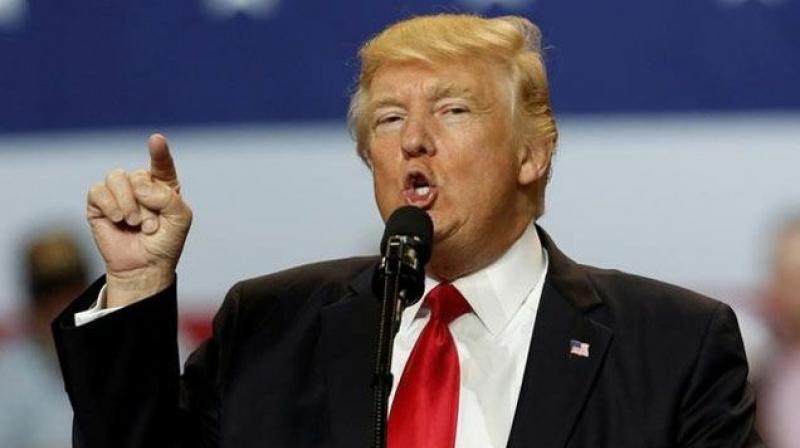When will the statues of Kim crumble?

North Korea has lately stood out as a nation determined to keep pouring its meagre resources into nuclear weaponry. A missile that flew over Japan last week was followed by a purported hydrogen bomb test, and the claim that the two techs are now capable of being deployed,
Perhaps inevitably, the American riposte has also revolved around the threat of mass destruction, alongside Donald Trump’s almost universally discounted warning to break off trade relations with any nation that has economic dealings with North Korea. One can only hope that whatever comes next will not entail any bloodshed. In some eyes it boils down to a contest for craziness between the US President and Kim Jongun — and, ominously, everyone knows that Mr Trump is determined to be second to none.
Pyongyang, meanwhile, does not restrict its ambitions to nuclear and missile technologies. It also excels in putting up monuments, all too many of them taking the shape of larger-than-life representations of Kim’s dad and granddad, respectively Dear Leader Kim Jong-il and Great Leader Kim Il-sung.
Whether or not there is another Korean war, it is more than likely most of these statues will crumble one day. This is obviously not a debate that is consuming North Korea at the moment, but the arguments over history reignited by last month’s clashes in Charlottesville, Virginia, are being echoed across the Anglosphere, from Canada and Britain down to Australia.
In fact, well before Charlottesville appeared on the international radar, a controversy raged in and around the English university town of Oxford over a statue at Oriel College of Cecil Rhodes, an 18th-century colonialist who made his fortune in southern Africa, and whose surname was incorporated in Rhodesia. It lives on in the Rhodes scholarships. No one seriously questions the fact that Rhodes was deeply racist. But then, European imperialism was based on white supremacist notions — which live on in various forms. On the other hand, given that hardly anyone associates Rhodes scholars with the abhorrent attitudes of the man whose name the scholarships bear, does the tag really matter?
Well, perhaps it does if it substantially contributes to the whitewashing of history. The recent arguments against demolishing statues have revolved around pretty much the same arguments. That they are historical monuments whose removal would be tantamount to destroying the past. That the figures represented by the statues may seem reprehensible in retrospect but they had redeeming features in the context of the times in which they lived, and it’s unfair to judge the likes of Admiral Nelson and Captain Cook from the vantage point of 21st-century morality.
Some of these points cannot be dismissed, and one of the proposed remedies has been to rewrite the plaques on the plinths of the statues to reflect a closer approximation of reality. But the supplementary questions in that case would be: who will do the rewriting? Another alternative is to remove the statues from public spaces and place them in museums. Yet another alternative involves supplementing the statues that exist with others dedicated to their historical or ideological adversaries. But are more statues really the answer? After all, most of the monuments to Confederate ‘heroes’ memorialised the sedition long after it was defeated, and in effect lamented the end of slavery.
Not surprisingly, among those advocating now for the representations to be left intact found no cause for complaint when Lenins and Stalins were being toppled in the former Soviet Union. Which suggests that much of the debate boils down to ideology. That certainly applies to the world’s largest statue that is being erected in Gujarat to deify Sardar Vallabhbhai Patel, the one Congress stalwart in whom the forces of Hindutva perceive a worthy progenitor.
By arrangement with Dawn

